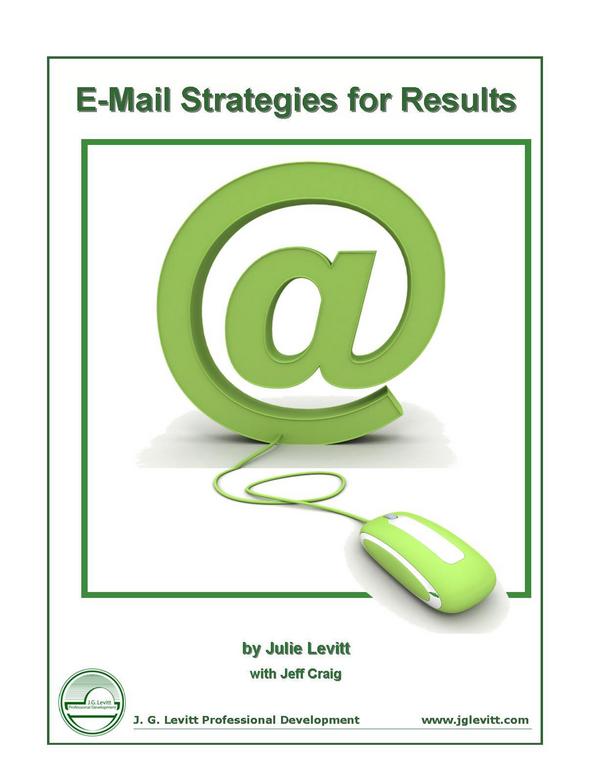|
Intended
For
This
course is intended for people desiring to improve their ability to
write and manage e-mail effectively.
Purpose
The primary
course objective is to provide information, techniques, and
numerous examples to help participants:
- Improve the
ability to write e-mail that grabs reader attention and gets
desired results
- Improve the
ability to manage e-mail professionally and efficiently
Learning
Objectives
- Organize
the message quickly and efficiently
- Write a
compelling subject line and a strong introductory lead
- Use
formatting techniques that grab attention and get
results
- Use a
positive tone to improve reader responsiveness
- Proofread
and review to assure clarity, correctness, and
completeness
- Use
efficient e-mail management strategies
- Increase
awareness of important legal and ethical e-mail issues
Methods
The instruction
is focused on interactive review, discussion, and application of
course techniques. All instruction is designed to help
participants transfer the skills easily and effectively to the
workplace.
-
Trainer
presentation of instruction
-
Group review and
discussion of instructional techniques and examples
-
Hands-on
participant activities to apply techniques (several for every
topic)
-
Final application
of techniques in editing participants’ previous e-mail
messages
Comprehensive,
Professional Book Provided
E-Mail
Strategies for Results, by Julie Levitt, is provided for each
course participant. This comprehensive collection of easy
tools to improve e-mail writing and management effectiveness is
both a learning tool and an efficient reference for future
use. The book reflects current business trends and
standards.
Contents
Introduction: Overview
-
Consider the
Impact of Business E-Mail
-
Improve Business
Operations Through Efficient E-Mail
-
Review the Course
Focus
-
Capstone
Activity: Draft an assigned e-mail message
Part
1: Plan and Develop the message
-
Know When to Use
E-Mail
-
Know How to
Address E-Mail
-
Jump-Start the
Message with 7 Questions
-
Lead with the
Purpose and Main Points
-
Write an
Attention-Grabbing Subject Line
-
Use Attachments
Correctly
-
Include an
Appropriate Closing
-
Capstone
Activity: Revise drafted e-mail; apply Part 1
techniques
Part
2: Grab Attention and Get Results with Formatting and
Tone
-
Draft; Then
Improve Readability with Formatting
-
Use Standard
Capitalization and Punctuation
-
Grab Attention
with Headings and Lists
-
Increase Clarity
With Tables, Graphs, and Charts
-
Get Results with
a Positive Tone
-
Capstone
Activity: Revise drafted e-mail to apply Part 2
techniques
Part
3: Proofread and Review for Clarity and
Correctness
-
Use Different
Methods for Formal and Informal E-Mail
-
The Informal
2-Step Proofreading
-
Formal
Proofreading Method
-
Capstone
Activity: Mark corrections to e-mails you brought to
class
Part 4:
Use Efficient Management Strategies
-
Write Productive
E-Mail Responses
-
Use Tools to
Boost Inbox Efficiency
-
Avoid Inefficient
Multitasking
-
Improve Workflow
With E-Mail Standards
-
Capstone Activity:
Outline goals for improving e-mail management in your
workplace
Appendix
|
